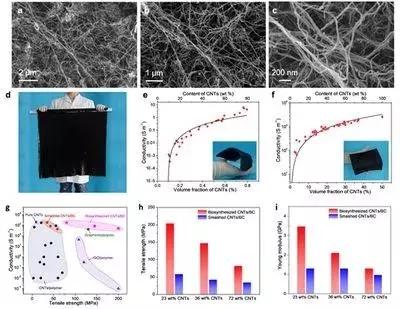Recently, the National Science Review published the latest research results of Professor Yu Shuhong's research team at China University of Science and Technology.
Nanomaterials have many excellent properties. The assembly of nanomaterials into macroscale materials enables microscopic "integration" of microscopic properties and the realization of many new and unseen properties of individual nanoparticles, such as optics, magnetism, and electricity. And ion conductivity and so on. However, how to assemble nanomaterials into macro-scale materials and maintain their unique properties at the nanometer scale is the key to the practical application of nanomaterials and one of the important challenges.

Solid medium-aerosol biosynthesis
Recently, Professor Yu Shuhong's research team developed a general biosynthesis method, solid substrate-aerosol biosynthesis, which stabilizes the interface of microbial synthesis of nanocellulose by replacing the traditional liquid fermentation substrate of Acetobacter xylinum with a solid state. By programmatic control, different nano-cells were deposited on the nanocellulose growth interface to achieve uniform composite of nanocellulose and nano-cells. For the first time, a series of macro-scale bulk bacterial cellulose with controlled content and regular shape of nano-structured units was successfully prepared. nanocomposites. Compared with the traditional slurry method, the biosynthesis process completely retains the three-dimensional nano-network structure of the bacterial cellulose, and the prepared composite material has better mechanical strength while retaining the nano-scale nano-scale excellent performance.
Studies have shown that this synthesis is a versatile method for preparing a series of macroscopic composite blocks composed of different nanomaterials and bacterial cellulose, including zero-dimensional nano-cells (silica nanospheres, ferroferric oxide micro-micro Balls, carbon black particles, etc.), one-dimensional nano-units (carbon nanotubes, calcium silicate nanowires, silicon carbide wires, etc.), two-dimensional nano-units (boron nitride nanosheets, graphene oxide, nanoclay tablets, etc.). In the prepared bulk material, the nano material content weight ratio is adjustable from 0 to 85%, and the microscopic nano materials are uniformly distributed in the macroscopic three-dimensional nanocellulose block network.

Morphology and properties of carbon nanotube/bacterial cellulose composites
According to reports, the block prepared by this method can well retain the excellent properties of its nano-scale nano-scale. Among them, the prepared carbon nanotube/bacterial cellulose composite film has better comprehensive performance of electrical conductivity and mechanical strength than all the similar materials reported in the past. While maintaining high strength, the electromagnetic shielding performance of this composite film is also superior to the similar materials reported. In addition, the microbial fermentation process under normal temperature and pressure does not involve the use of any organic solvent, nor does it produce any harmful substances, and has the advantages of environmental friendliness and low cost. In particular, the method can be flexibly combined with the current bacterial cellulose production process of the food industry, and is expected to realize the industrial production of the above-mentioned high-performance composite material block, and thus has broad application prospects.
Milk Cup,Nontoxic Ceramic Milk Cup,Elegant Shape Milk Cup,Sustainable Ceramic Milk Cup
shaoxing qinzi business company ltd , https://www.qinzisx.com